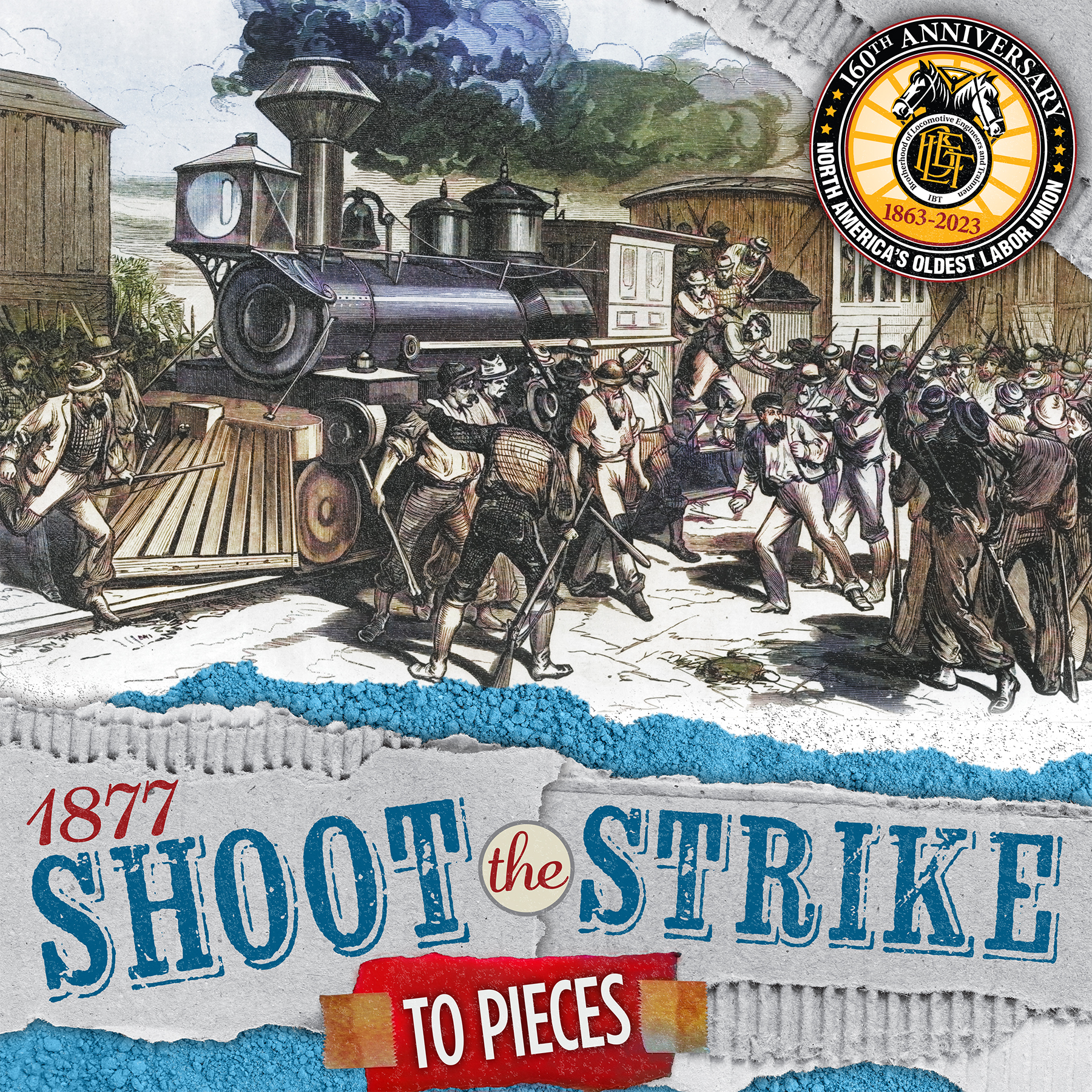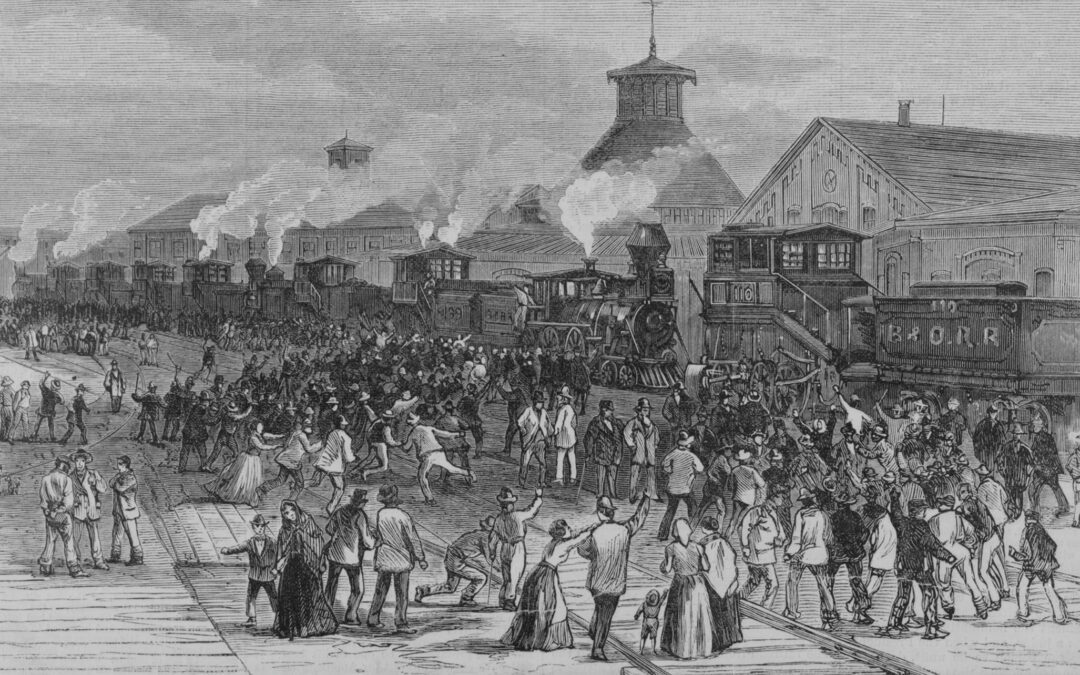The year 1877 was filled with strikes and labor unrest in various parts of the country. Engineers walked out on the Boston & Maine, the Philadelphia & Reading, Central Railroad of New Jersey, the Grand Trunk, the Pennsylvania Railroad, the St. Louis & Cairo Narrow Gauge, and the Georgia Road. Worst of all was the strike against the Baltimore & Ohio in which Federal troops were called out. The soldiers fired on the strikers, killing and wounding several of them. In Reading, Pa., 10 were killed — including Division 75 members John H. Weaver and John A. Cassidy — and 40 were wounded. In Pittsburgh, shots were fired into crowds supporting Pennsylvania Railroad strikers and the result was 21 killed and 29 wounded, among them women and children. And now the slogan was adopted by the railroads: “Shoot the strike to pieces” and this the troops did effectively.
President Rutherford B. Hayes stepped in and declared martial law so that trains could be run, and the country was in an uproar. But despite the attacks of its enemies, the Brotherhood continued to advance. The turbulence of the events of 1876 and 1877 tended to obscure other advances made by the Brotherhood on roads where relations remained amicable during the depression and the Great Strike. The depression lifted and more favorable contracts were being written. The following year Grand Chief Engineer Arthur made an effort to set the public record straight.
“Our laws require,” he said, “that every honorable effort shall be exhausted before a strike is resorted to, and we have invariably adhered to the rules.” At the 22nd annual convention in 1885 he spoke further on the subject in order to clear up any popular misconception: “The Brotherhood of Locomotive Engineers is not a union of despotic, ignorant men, to defeat and ruin the ends of capital, but an association of as intelligent men as one meets in money circles.”


